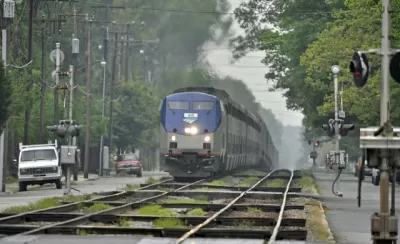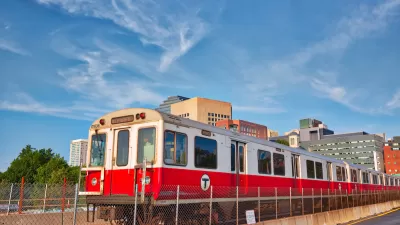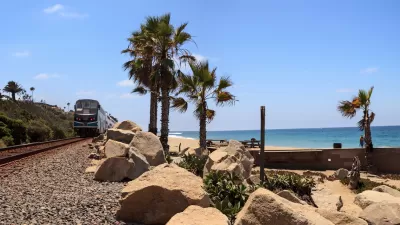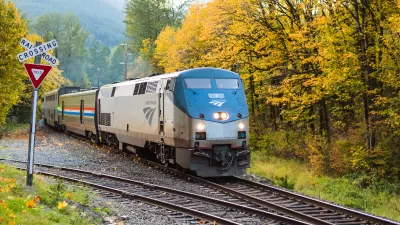While the agency is receiving less funding than advocates say is needed, it will also have a new mandate that prioritizes public service over profitability.

The current version of the "bipartisan infrastructure bill includes $66 billion in new funding for rail to address Amtrak’s maintenance backlog, along with upgrading the high-traffic Northeast Corridor from Washington to Boston" and changing the mandate of the agency, writes Madeleine Ngo. "The bill includes new language that would change Amtrak’s goal to meet the intercity passenger rail needs of the United States' rather than achieving 'a performance level sufficient to justify expending public money.' It would also add language that prioritizes service in rural areas in addition to urban ones," officially shifting the focus from profitability to public service. The new funding "comes as the agency tries to significantly expand its map nationwide by 2035 to provide more service outside of the Northeast and mid-Atlantic."
"Although John Robert Smith, a former board chairman for Amtrak, said he preferred the higher level of funding for Amtrak in the House’s version of the bill, he said he was pleased to see senators make an effort to address Amtrak’s maintenance backlog."
In addition to heavy rail, "[p]ublic buses, subways and trains are also set to receive $39 billion in new funding under the bill," but with an estimated $176 million maintenance backlog, transit advocates say it isn't nearly enough to modernize and improve the nation's transit systems.
FULL STORY: Amtrak in the infrastructure bill: $66 billion in new funding, and an adjusted mandate.

Planetizen Federal Action Tracker
A weekly monitor of how Trump’s orders and actions are impacting planners and planning in America.

Chicago’s Ghost Rails
Just beneath the surface of the modern city lie the remnants of its expansive early 20th-century streetcar system.

San Antonio and Austin are Fusing Into one Massive Megaregion
The region spanning the two central Texas cities is growing fast, posing challenges for local infrastructure and water supplies.

Since Zion's Shuttles Went Electric “The Smog is Gone”
Visitors to Zion National Park can enjoy the canyon via the nation’s first fully electric park shuttle system.

Trump Distributing DOT Safety Funds at 1/10 Rate of Biden
Funds for Safe Streets and other transportation safety and equity programs are being held up by administrative reviews and conflicts with the Trump administration’s priorities.

German Cities Subsidize Taxis for Women Amid Wave of Violence
Free or low-cost taxi rides can help women navigate cities more safely, but critics say the programs don't address the root causes of violence against women.
Urban Design for Planners 1: Software Tools
This six-course series explores essential urban design concepts using open source software and equips planners with the tools they need to participate fully in the urban design process.
Planning for Universal Design
Learn the tools for implementing Universal Design in planning regulations.
planning NEXT
Appalachian Highlands Housing Partners
Mpact (founded as Rail~Volution)
City of Camden Redevelopment Agency
City of Astoria
City of Portland
City of Laramie





























